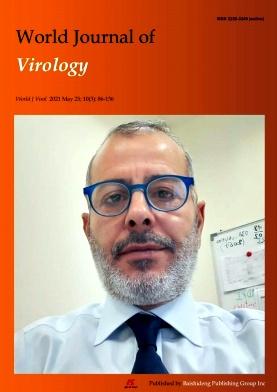Educational, psychosocial, and clinical impact of SARS-CoV-2 (COVID-19) pandemic on medical students in the United States
引用次数: 3
Abstract
BACKGROUND The coronavirus disease 2019 (COVID-19) pandemic altered education, exams, and residency applications for United States medical students. AIM To determine the specific impact of the pandemic on US medical students and its correlation to their anxiety levels. METHODS An 81-question survey was distributed via email, Facebook and social media groups using REDCapTM. To investigate risk factors associated with elevated anxiety level, we dichotomized the 1-10 anxiety score into low (≤ 5) and high (≥ 6). This cut point represents the 25th percentile. There were 90 (29%) shown as low anxiety and 219 (71%) as high anxiety. For descriptive analyses, we used contingency tables by anxiety categories for categorical measurements with chi square test, or mean ± STD for continuous measurements followed by t-test or Wilcoxson rank sum test depending on data normality. Least Absolute Shrinkage and Selection Operator was used to select important predictors for the final multivariate model. Hierarchical Poisson regression model was used to fit the final multivariate model by considering the nested data structure of students clustered within State. RESULTS 397 medical students from 29 states were analyzed. Approximately half of respondents reported feeling depressed since the pandemic onset. 62% of participants rated 7 or higher out of 10 when asked about anxiety levels. Stressors correlated with higher anxiety scores included “concern about being unable to complete exams or rotations if contracting COVID-19” (RR 1.34; 95%CI: 1.05-1.72, P = 0.02) and the use of mental health services such as a “psychiatrist” (RR 1.18; 95%CI: 1.01-1.3, P = 0.04). However, those students living in cities that limited restaurant operations to exclusively takeout or delivery as the only measure of implementing social distancing (RR 0.64; 95%CI: 0.49-0.82, P < 0.01) and those who selected “does not apply” for financial assistance available if needed (RR 0.83; 95%CI: 0.66-0.98, P = 0.03) were less likely to have a high anxiety. CONCLUSION COVID-19 significantly impacted medical students in numerous ways. Medical student education and clinical readiness were reduced, and anxiety levels increased. It is vital that medical students receive support as they become physicians. Further research should be conducted on training medical students in telemedicine to better prepare students in the future for pandemic planning and virtual healthcare.SARS-CoV-2 (COVID-19)大流行对美国医学生的教育、心理和临床影响
2019冠状病毒病(COVID-19)大流行改变了美国医学生的教育、考试和住院医师申请。目的了解新冠肺炎疫情对美国医学生的具体影响及其与焦虑水平的相关性。方法使用REDCapTM通过电子邮件、Facebook和社交媒体群进行81个问题的调查。为了研究与焦虑水平升高相关的危险因素,我们将1-10的焦虑评分分为低(≤5)和高(≥6)。这个切点代表第25个百分位。有90人(29%)表现为低焦虑,219人(71%)表现为高焦虑。对于描述性分析,我们使用焦虑类别列联表进行分类测量并进行卡方检验,或使用均值±STD进行连续测量,然后根据数据正态性进行t检验或Wilcoxson秩和检验。最小绝对收缩和选择算子被用来为最终的多变量模型选择重要的预测因子。考虑州内学生的嵌套数据结构,采用层次泊松回归模型拟合最终的多元模型。结果对来自29个州的397名医学生进行了分析。大约一半的答复者报告说,自大流行开始以来,他们感到抑郁。当被问及焦虑程度时,62%的参与者给7分或更高。与较高焦虑得分相关的压力因素包括“担心感染COVID-19后无法完成考试或轮班”(RR 1.34;95%CI: 1.05-1.72, P = 0.02)和使用精神卫生服务,如“精神病医生”(RR 1.18;95%ci: 1.01-1.3, p = 0.04)。然而,那些生活在将餐馆经营仅限于外卖或外卖作为实施社交距离的唯一措施的城市的学生(RR 0.64;95%CI: 0.49-0.82, P < 0.01),那些选择“不申请”的人在需要时可以获得经济援助(RR 0.83;95%CI: 0.66-0.98, P = 0.03),高度焦虑的可能性较小。结论新冠肺炎对医学生的影响是多方面的。医学生的教育程度和临床准备程度降低,焦虑水平上升。医学生在成为医生的过程中得到支持是至关重要的。应进一步研究如何对医学生进行远程医疗培训,以使学生更好地为未来的大流行规划和虚拟保健做好准备。
本文章由计算机程序翻译,如有差异,请以英文原文为准。
求助全文
约1分钟内获得全文
求助全文

 求助内容:
求助内容: 应助结果提醒方式:
应助结果提醒方式:


